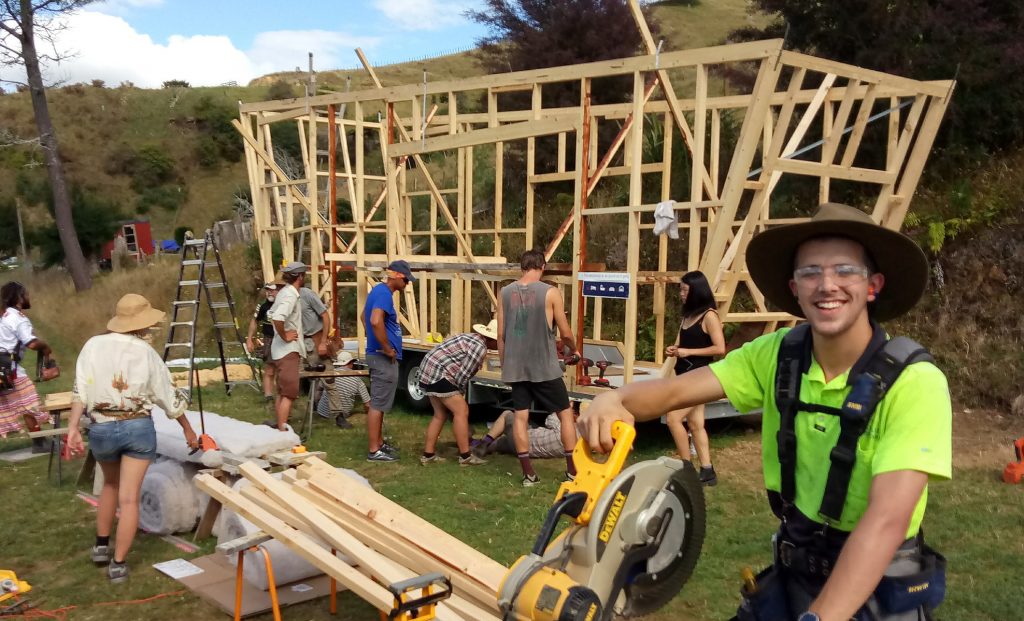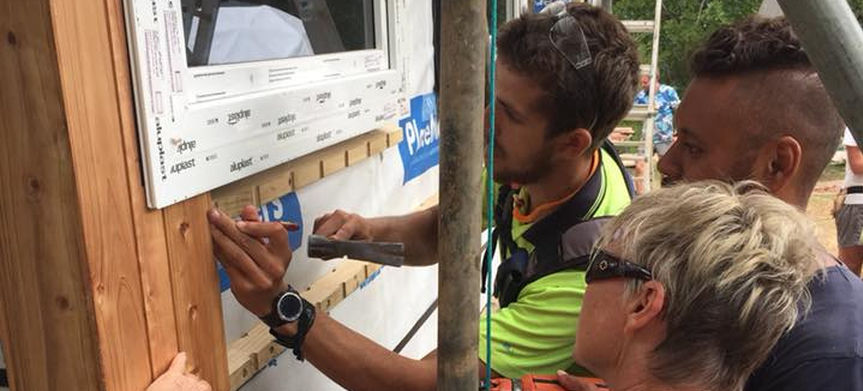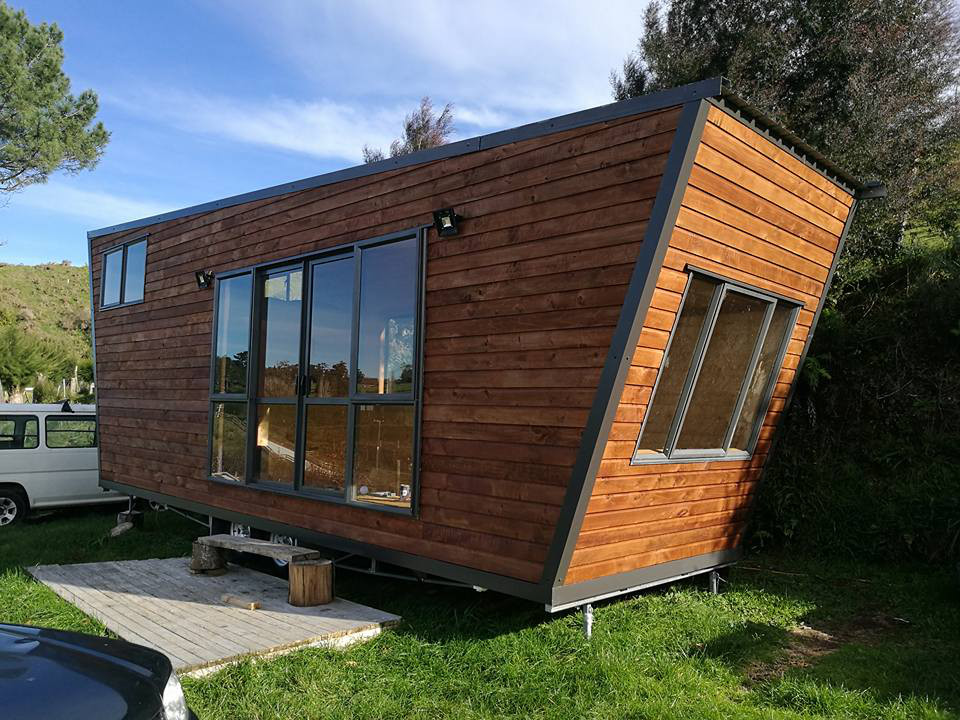Podcast: Play in new window | Download | Embed
Natural. Passive. Tiny. This is what Ever Homes is all about. Founder and builder Everett Norris created Ever Homes to build Tiny Homes and to help people learn how to build their own Tiny House.
The Dream of Home Ownership
Everett Norris always wanted to build his own house. As a boy, he also assumed that he’d own his own house. This sounds simple enough, but in reality, home ownership is becoming more like Everett’s naive childhood dream for many New Zealanders. For more and more people, having a place to live doesn’t mean ‘owning’ a house.
From Computer to Hammer
At first Everett thought he’d be become an architect in order to achieve his dream but the thought of sitting in front of a computer for most of the day didn’t appeal to him. He changed tack and started a building apprenticeship, immediately applying what he was learning each day to his own project..

A House Made of Straw
When Everett was a young boy he had the experience of helping with the construction of a straw bale house. I’ve noticed that people who work with natural building products such as straw, mud brick or rammed earth, tend to fall in love with the method as well as the finished product. It’s a very tactile experience working with raw, natural products. The sturdy thick walls and quiet ambience of straw and earth homes are equally appealing. These buildings tend to create raving fans out of those who take part in their creation.
The Price of Land
A natural home is all well and good. You can save on some of the construction costs if you’re willing to invest some of your own labour into the project. But you still need a piece of land to build it on, and land is expensive.
Tiny Houses are not necessarily fixed to the ground. In fact, the potential mobility of a Tiny House is one of it’s defining features. Tiny House owners and advocates can often find small pieces of land that they can use at little or no cost, thereby removing one of the more significant barriers to entry of home ownership.
Learning and Building
Everett built his first 17 m2 Tiny House on a piece of land owned by his parents. He worked on it in the evenings and on the weekends, directly applying the skills he was learning as a carpentry apprentice. If he learnt how to build a roof during the day, he’d come home and start work on the roof of his own Tiny House.

What Exactly is a Tiny House?
Everett refers to the definition of a Tiny House as being a building with a floor area of less than 45 m2. It doesn’t need to be on wheels.
The Tiny Life suggests that Tiny Homes are between 100 square feet (9.3 m2) and 400 square feet (37.2 m2).
New Zealand’s own Bryce Langston has more background on the Tiny House Movement and it’s relevance to New Zealand in his Living Big in Tiny House videos and on his informative website.
Quality over Quantity
Like most Tiny House advocates, he also stands by the philosophy of quality over quantity.
By spending less on the quantity of materials, more can be spent on quality. Combined with clever design and loving care during construction, it’s possible to create a high quality space within a Tiny Home. A smaller space is much easier to keep warm especially if attention is paid to making it airtight. One of Everett’s first houses was so airtight it was difficult to get an accurate airtightness reading using standard measuring equipment.
A small, airtight building also requires good ventilation and most likely some way of avoiding overheating during summer. This should be addressed with sensible window sizing, placement and external shading.
Learn How to Build Your Own Tiny House
Everett now runs Tiny House workshops. Check out his website for details of upcoming courses or to get in touch with Everett directly.


Leave a Reply